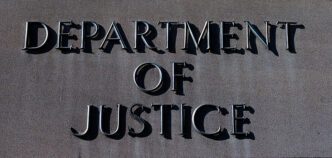Concerns have arisen regarding the level of public participation in the development of Kalispell’s new land use plan, a critical aspect for shaping the future of housing in the city. During a recent meeting, the Kalispell Planning Commission reviewed the progress of initiatives aimed at soliciting community feedback on strategies to enhance attainable housing options. Despite these efforts, there remains apprehension among commission members that a significant portion of the community is still not fully informed about Senate Bill 382 and its implications. Signed into law by Governor Greg Gianforte in May 2023, this bill, known as the Montana Land Use Planning Act, aims to simplify construction processes in response to the statewide housing shortage.
The legislation mandates ten Montana cities, including Kalispell, to develop new land use plans primarily based on public engagement. However, it has faced criticism for its approach to public input, specifically by limiting involvement in site-specific developments. The law proposes to gather public opinions during the plan’s drafting stage, thus eliminating public hearings on site-specific construction projects. Nevertheless, annexations and zoning changes will still undergo a public process.
Recently, a district court judge in Bozeman declared the provision to restrict public input on site-specific projects unconstitutional, leaving city planners in uncertainty about future proceedings. To facilitate public engagement, a Colorado-based firm, Logan Simpson, was appointed in December to lead the campaign. Their efforts have included open houses and drop-in sessions, which have attracted around 60 in-person responses and 110 via the city’s dedicated website. The initiative allows residents to select preferred zoning regulations aimed at promoting attainable housing from a list of 14 options outlined in the act.
The community’s feedback highlighted several pressing issues, including the proliferation of vacation rentals, inadequate school funding, high living costs, insufficient pedestrian and bicycle infrastructure, and rapid development leading to urban sprawl. Popular zoning regulations supported by residents include permitting apartments in office and commercial zones, increasing housing density near transit and employment centers, and incorporating tiny houses into the building code. Additionally, there was a preference for allowing secondary homes on single-family lots and increasing building heights by 25%.
Despite the ongoing efforts to engage the public, some commission members fear that citizens may still find themselves surprised or frustrated by future developments occurring without their immediate awareness. To address these concerns, further public engagement events are scheduled for the summer, with a public hearing on the final draft anticipated in August.
In other developments, the commission has approved the construction of a new multi-use building for the Montana Department of Transportation in North Kalispell. The proposed project, now awaiting City Council review, involves the annexation of a nine-acre plot currently used as a maintenance yard. The new facility will consolidate equipment storage and include mechanics and welding shops. A condition in the permit allows the developer to decide on fencing options, along with the requirement of constructing a road connection from Rose Crossing to Quail Lane.
The Evolving Landscape
This land use planning and legislation could significantly impact Kalispell residents and the broader community. The reduced public input on site-specific developments may lead to unexpected changes in neighborhood dynamics and property values, potentially affecting the local quality of life. Residents might find themselves adapting to increased density and new residential structures that alter the character of their communities.
The focus on attainable housing through public engagement seeks to address housing shortages and improve affordability. However, the changes may also lead to spirited debates about the balance between growth and maintaining community identity. Additionally, the construction of the new Department of Transportation building could enhance local infrastructure and services but may also require adjustments in traffic patterns and land usage.






